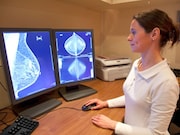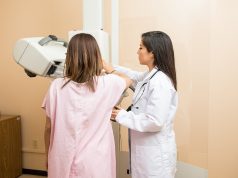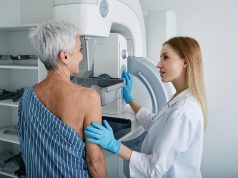Implementation of DL algorithm in routine clinical practice has agreement with radiologists
THURSDAY, Oct. 18, 2018 (HealthDay News) — A deep learning (DL) algorithm can successfully assess mammographic breast density, according to a study published online Oct. 16 in Radiology.
Constance D. Lehman, M.D., Ph.D., from Harvard Medical School in Boston, and colleagues conducted a retrospective study to develop a DL algorithm to assess mammographic breast density. A deep convolutional neural network was trained to assess Breast Imaging Reporting and Data System breast density based on an original interpretation by an experienced radiologist of 41,479 digital screening mammograms obtained in 27,684 women. The resulting algorithm was tested on a set of 8,677 mammograms from 5,741 women. Five radiologists performed a reader study on 500 randomly selected mammograms from the test set. The algorithm was implemented in routine clinical practice, where eight radiologists reviewed 10,763 consecutive mammograms assessed with the model.
The researchers found good agreement between the DL model and radiologists in the test set (κ = 0.67) and with radiologists in the reader set (κ = 0.78). In the clinical implementation set, there was very good agreement with radiologists (κ = 0.85); 94 percent of the 10,763 DL assessments for binary categorization of dense or non-dense breasts were accepted by the interpreting radiologist.
“Our DL model provides efficient and reliable density assessments, both at the patient level and at the population level, and it is designed to be widely available, simple to use, and cost-effective,” the authors write.
Two authors disclosed financial ties to pharmaceutical and medical technology companies, and three authors work for an institution that has submitted a patent for the density assessment algorithm.
Copyright © 2018 HealthDay. All rights reserved.








